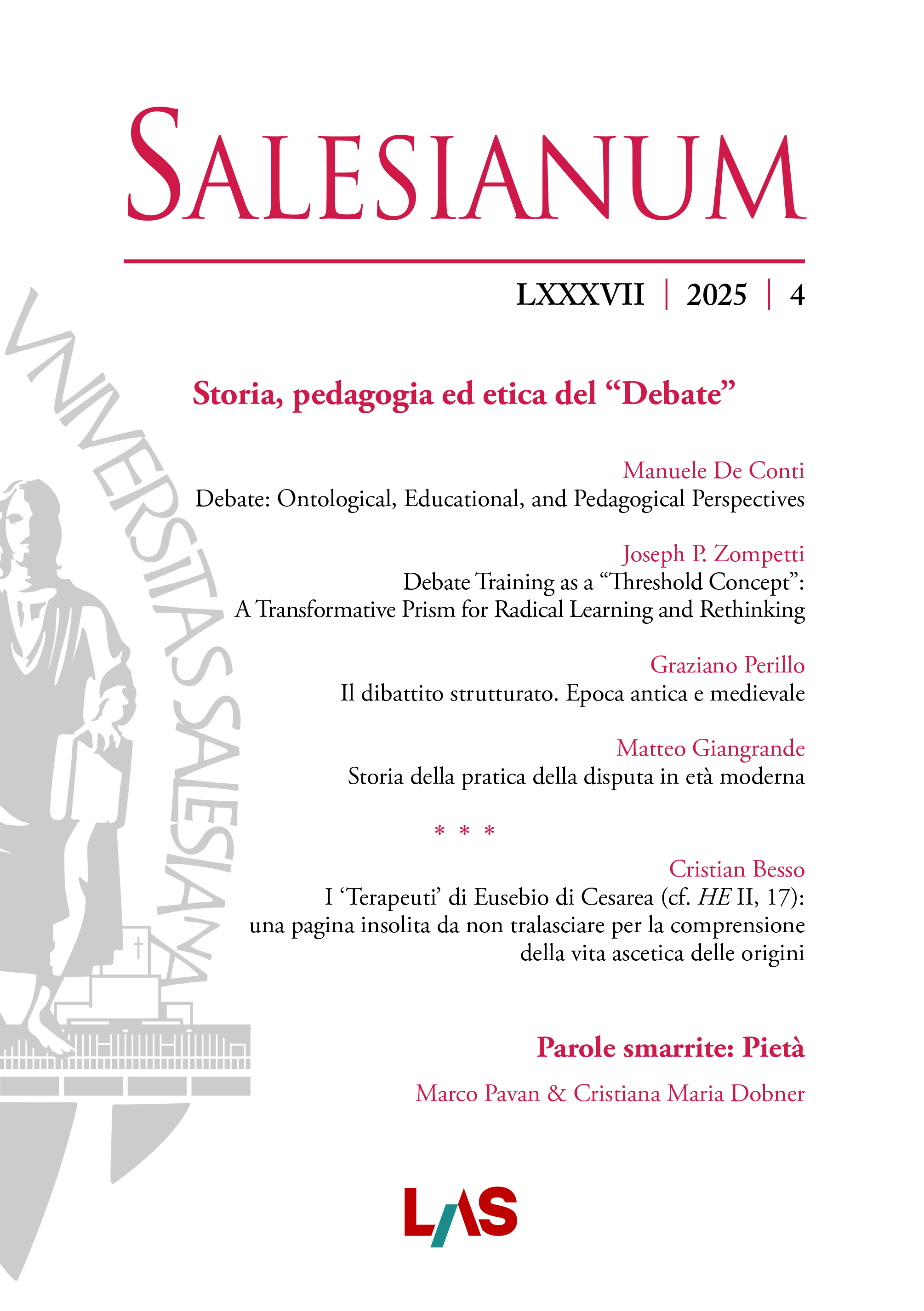Come una freccia scoccata al bersaglio. L'uso di ὲπιτυγάνω nelle Lettere di sant'Ignazio di Antiochia
Salesianum vol. 66 (2004) n. 3, 441-480
Sezione: Studia
Sommario
Lo studio si prefigge di focalizzare la centralità del verbo ε’πιτυγχάνω (θεου˜) nella Lettera ai Romani di Ignazio e la sua importanza nel resto del corpus. Il “raggiungere Dio” si colloca sullo sfondo come il punto verso il quale tende irresistibilmente l’itinerario del martire come una freccia scoccata al bersaglio. Egli si sente gravitare verso la meta con l’urgenza con cui il Cristo saliva a Gerusalemme verso la sua “ora”. La prima parte della ricerca è di carattere più strettamente linguistico. Si introduce dipanando l’evoluzione del verbo entro l’arco della sua storia, dalle origini remote fino al greco contemporaneo a Ignazio, per scendere poi a un’analisi accurata (lessicologica, sintattica, stilistica) di tutte le occorrenze di (ε’πι)τυγχάνω nel corpus ignaziano. La seconda sezione si addentra nell’universo simbolico del vescovo martire, alla ricerca delle icone confluenti nella tensione di “raggiungere Dio”, divenuta per lui quasi una legge di gravitazione. Ignazio vuole diventare tutto ciò che il suo “amore crocifisso” è stato, precedendolo verso il Calvario, per essere suo vero discepolo: silenzio e parola, oriente, pane, sacrificio e libagione, pastore, sorgente d’acqua viva.
Abstract
This essay intends to focalize on the centrality of the verb ε’πιτυγχάνω (θεου˜) in the Letter to the Romans of Ignatius and its importance in the rest of the text. The “reaching God” is set in the background as the point towards which the itinerary of a martyr irresistibly tends, as “an arrow shot at the target”. He feels himself to be drawn towards the goal with the same urgency with which Christ went up to Jerusalem, towards his “hour”. The first part of the research is strictly more linguistic in character. It begins with unraveling the evolution of the verb within the span of its history, from the remote origins till contemporary Greek to Ignatius and then delves to make an accurate analysis (lexicological, syntactical, stylistic) of all the occurrences of (ε’πι)τυγχάνω in the Ignatian text. In the second session the author penetrates into the symbolic universe of the bishop martyr, in search of confluent icons in the tension towards “reaching God”, which becomes for him almost a law of gravitation. Ignatius wants to become all that which his “crucified love” became, preceding him towards Calvary, in order to be his true disciple: silence and word, east, bread, sacrifice and libation, pastor, spring of living water.
